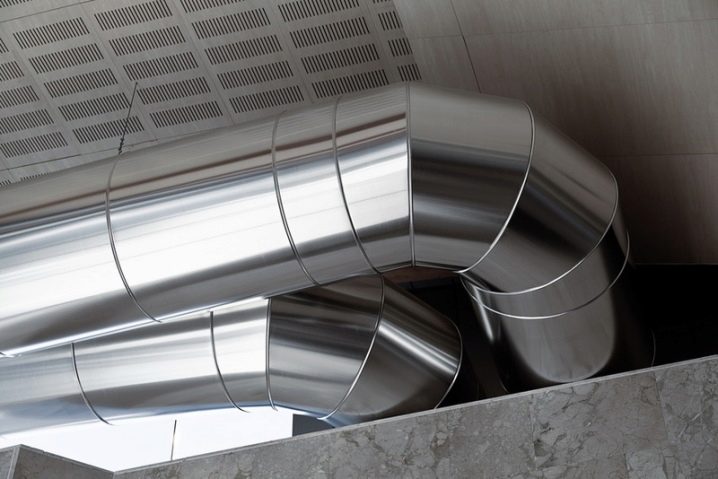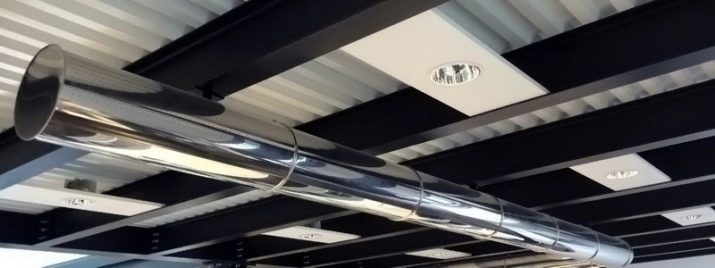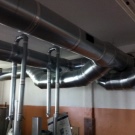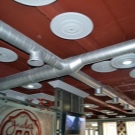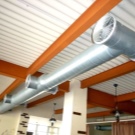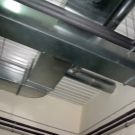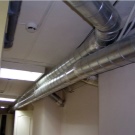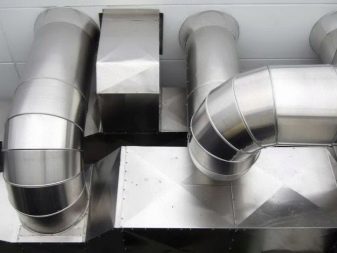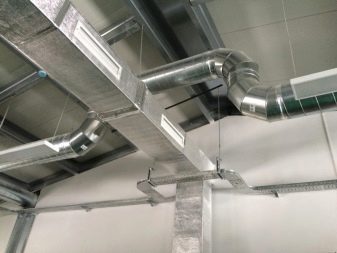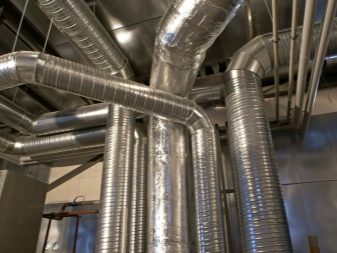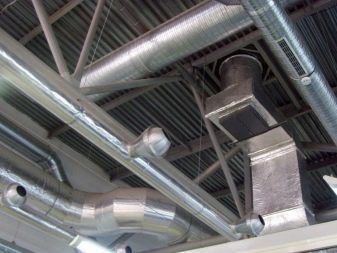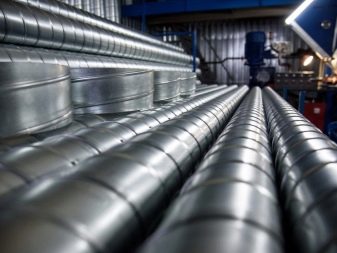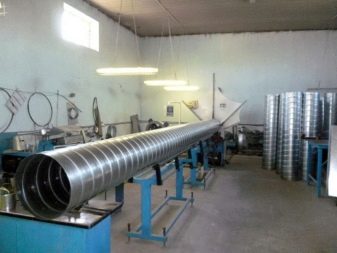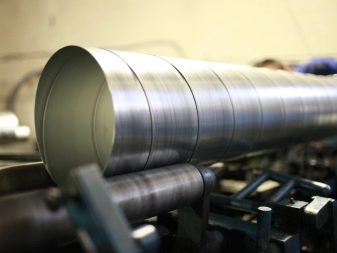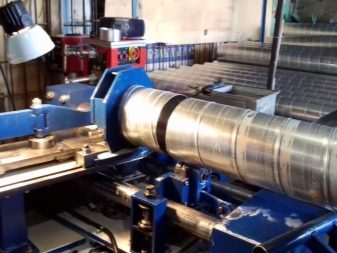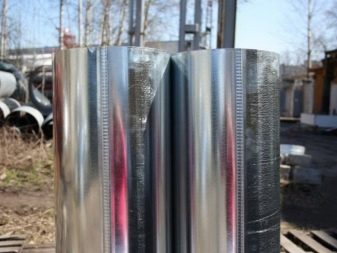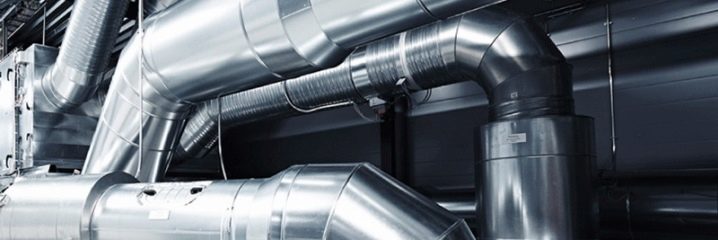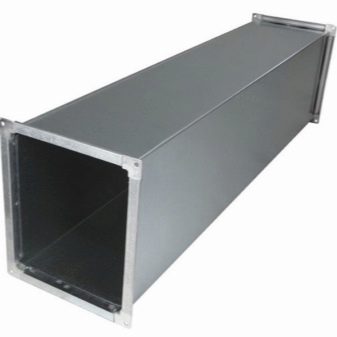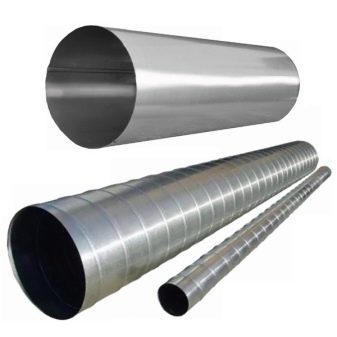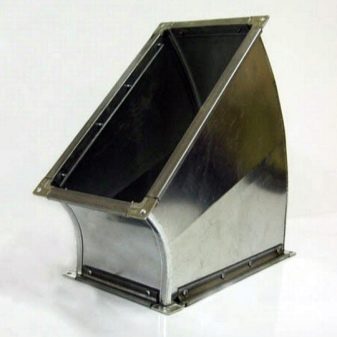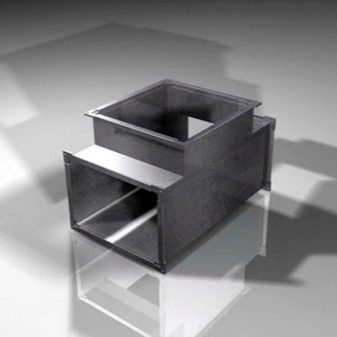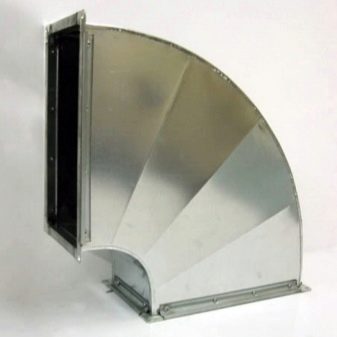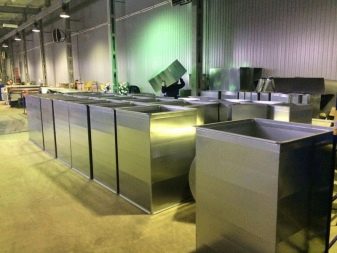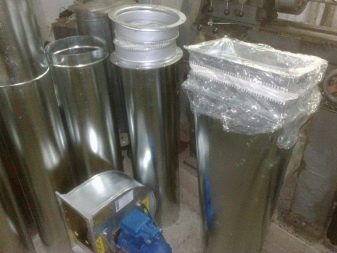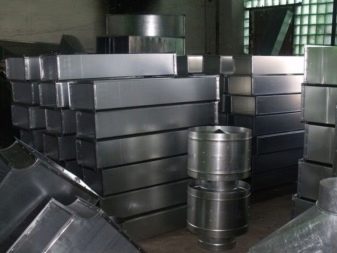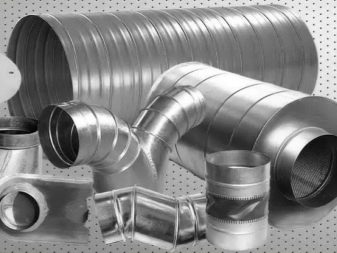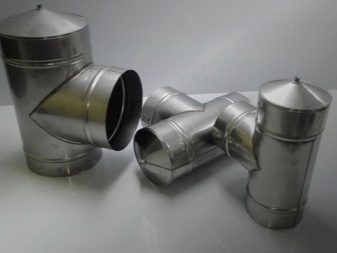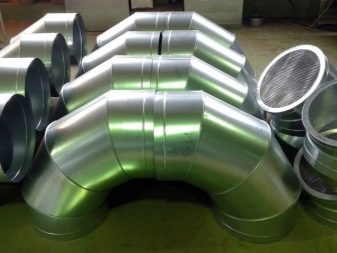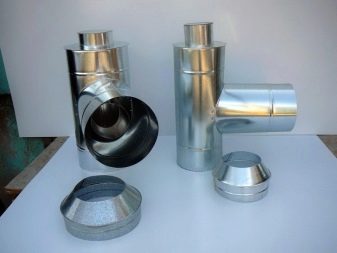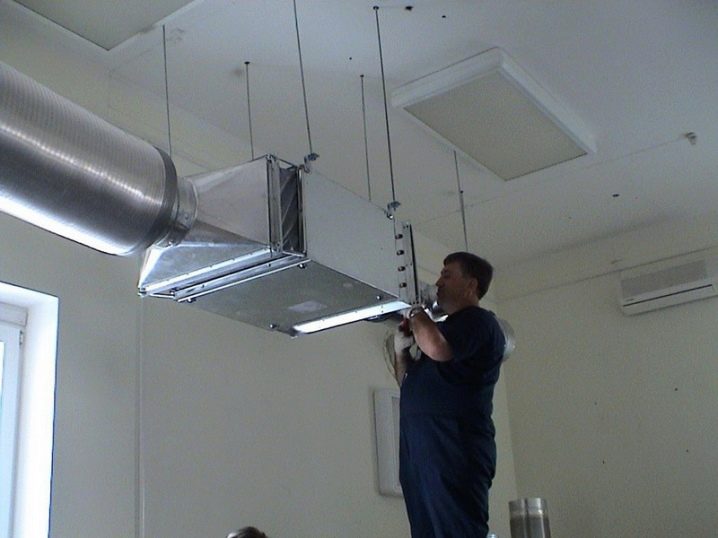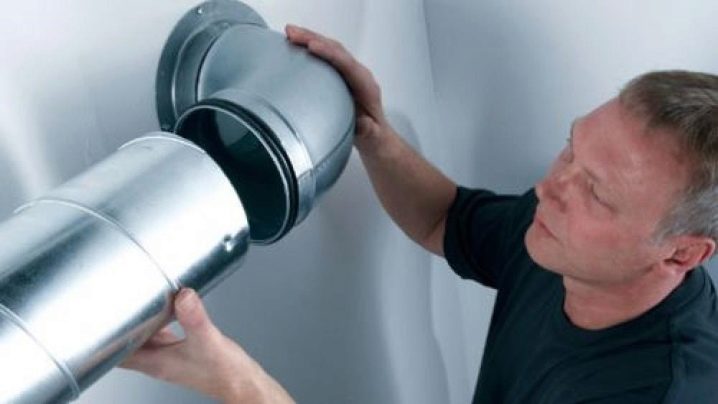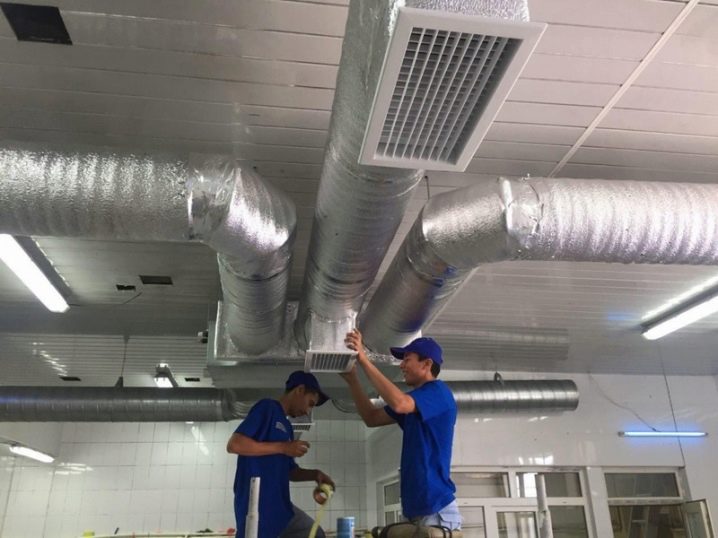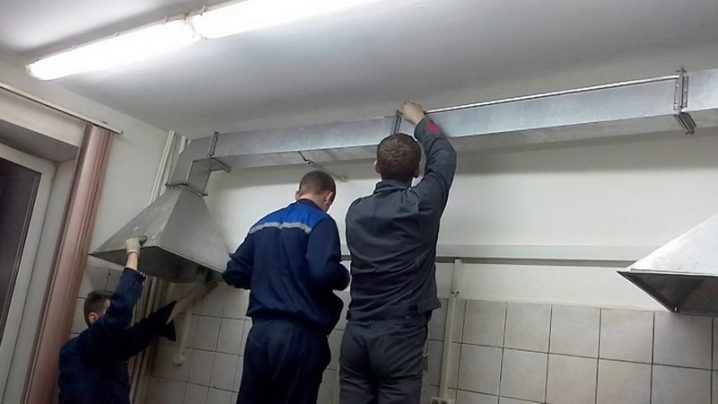Features and installation of galvanized air ducts for ventilation

Air ducts made of galvanized steel are widely used in the construction of ventilation and are one of the best options for the technical equipment of ventilation systems. Due to its high performance, galvanized pipelines are chosen for installation much more often than products made from other materials.
Specifications
The ventilation duct is a pipeline system that serves to remove polluted air from a room and transport clean air in the opposite direction.In this case, the movement of air masses through pipes can be carried out both with the help of natural thrust and forcibly. Scope of galvanized ducts is quite wide. With their help, installed ventilation units of the supply type, as well as roof and central air conditioning systems. In addition, with a certain modernization of the pipeline system, the supplied air can be additionally cleaned using a filter system or heated. Galvanized air ducts can be seen in residential buildings, private cottages, office premises, catering establishments, shopping centers and production workshops of large industrial enterprises.
Air ducts and ventilation boxes are made of metal of different thickness and quality. So, for arranging the ventilation systems of apartments and private houses, models made of cold-rolled sheet material with a thickness of 0.5 to 1 mm are used. The upper temperature limit for such products is 80 degrees, while the humidity level is limited to 60%. These indicators that meet the requirements of GOST 14918 80, is quite enough for the operation of domestic ventilation.When installing ventilation in large industrial enterprises or in catering organizations, they use models that can withstand temperatures up to 500 degrees and are resistant to aggressive media. For the manufacture of such ducts used corrosion-resistant heat-resistant steel that meets GOST 5632 72.
Manufacturing features
Galvanized sheet steel with a thickness of 0.5 to 1.25 mm is used as a raw material for the manufacture of pipes. Such thicknesses are due to the need to maintain an optimal balance between the stiffness of the model and its weight. The manufacture of air ducts is carried out by two methods: spiral-wound and straight-line.
- The essence of the first method is as follows: A special machine produces a 137 mm wide strip wrap into a pipe of a certain section. At the same time, the neighboring turns are overlapped, which is why the previous turn fits tightly and a slight deformation of the metal in the form of a grab. The method of winding provides high rigidity of the finished product. This is due to the fact that the role of a stiffener plays a screw joint.
The thickness of the sheet metal depends on the size of the cross section of the product and is 0.55 mm for pipes with a diameter of 150-355 mm, 0.7 mm for products with a size of 400-800 mm, and 1-1.25 mm for dimensional air ducts whose diameter reaches 1250 mm. The length of the modules varies from three to six meters and can be reduced or increased at the request of the customer. The spiral-wound method is characterized by high performance, which allows to wrap about 60 meters of sheet material per minute. Connection of pipes to each other is performed using the nipple method.
- Longitudinal technology. The manufacture of pipes by this method occurs in three stages. First, the machine cuts strips of the required length from sheet metal. Then the blanks are passed through the system of rollers, which give the material the desired shape, and at the final stage the edges of the future pipe are joined. This method is used for the manufacture of pipes of the profile pipeline and ventilation ducts. The ends of the sections of rectangular cross-section are often ready for flange connections, which greatly simplifies their installation. The length of longitudinal models varies from 1, 25 to 2.5 meters.
Advantages and disadvantages
Popularity and high consumer demand for galvanized air ducts due to a number of indisputable advantages of these pipes.
- High corrosion resistance. Due to the zinc coating, the duct pipes do not require additional protection from moisture and can be used in rooms with a large formation of steam, for example, in swimming pools, baths and kitchens of catering establishments. In addition, in the case of a violation of the zinc layer, for example, the twisting of the screw, the material does not lose its anti-corrosion properties. This phenomenon is due to the formation of a galvanic couple involving steel and zinc, and the flow of certain chemical reactions, as a result of which the cut is covered with a thin oxide film.
- Comfortable cost allows not to save on material and to equip ventilation ducts in accordance with strict standards of GOST.
- As a result of the low weight of the air ducts, the load on the load-bearing walls of the structure and fastening elements is significantly reduced.
- The durability of galvanized elements distinguishes them from air ducts made of other materials.In addition, the products are easy to install and do not require special maintenance.
The disadvantages include a rustic appearance and acoustic properties of models that amplify the noise from the air masses passing through them.
Species
The shape of the ventilation ducts are divided into models of circular and rectangular cross-section. The first ones are produced in a wide variety of diameters and are connected in a nipple manner using self-tapping screws and special rivets. This type of connection significantly reduces the pressure loss inside the pipeline and prevents possible leakage of air masses. In addition, the stronger and airtight the connection, the less noise the ventilation system will produce during its operation. Products belong to the H-class tightness and have high aerodynamic properties.
Models with rectangular and square sections are also available in a wide variety of sizes and correspond to the classes of tightness H and P. Products of class P are characterized by additional processing of the flange and strengthening of longitudinal connections with the help of sealants. Class H does not meet such high requirements as the previous one, and allows for slight air leakage from the side.The connection of rectangular and square modules with each other is carried out by means of a flange method on the tire using sealing gaskets. To increase the rigidity of the pipeline, models in which the cross-sectional side exceeds 400 mm are equipped with special ridges installed at a distance of 300 mm between them, or reinforced using diagonal kinks.
The choice of the shape of the pipes for the arrangement of air ducts depends on the length of the ventilation systems and the nature of pollution of the air masses passing through the pipes. So, for arranging long systems, it is better to use galvanized pipes with a square or rectangular cross section. However, in the event of severe air pollution by fine fractional solid particles, it will be more practical to use round tubes. Therefore, the choice of the shape of the section in the construction of long ducts should be made taking into account all the nuances. When building small systems, the choice of forms may be dictated by the amount of solid impurities in the air masses and personal preference of the owners.
Shaped parts of air ducts
Shaped parts are an important link of ventilation systems and serve to change the direction of the pipeline, as well as its branching and connection of its nodes and elements.So, with the help of tees and collar inserts, two pipes are connected, adapters serve to form a single network from sections of different diameters, and the crosses provide for connection of two pipelines located perpendicularly. With the help of S-shaped adapters, it is possible to connect two circuits, the axes and sections of which do not coincide, and without rectangular and oblique taps, it would be impossible to turn the ventilation ducts.
Connecting shaped elements are represented by sleeves and nipples. With these parts, round pipes are connected, where the nipples are inserted into the pipe and the couplings are put on top. An important role is assigned to the plugs - parts installed on the ends of the circuit and ensure the tightness of the system. Also to the shaped elements are roof umbrellas that do not allow the ingress of rain and snow into the system, as well as various kinds of grilles and tie-ins. Parts are produced both in square (rectangular) and in circular cross-section, with dimensions that fully correspond to the duct pipes.
Installation details
Arrangement of ventilation ducts should be made in strict accordance with the requirements of SNiP.In the case of laying the duct in the process of building a building, its elements can be laid in special grooves; in other cases, the channel is formed independently, taking into account the fire safety rules. Thus, it is strictly prohibited to locate the ventilation duct at a distance of less than one meter from the gas pipeline. In addition, the installation of pipes outside the building implies their mandatory insulation. Otherwise, condensate will form in the system, which will eventually lead to rust on the damaged areas.
No less important point of installation is to mount the duct to the supporting structures. This is especially true of ventilation systems equipped with the function of forced air outflow. It is recommended to fasten such a construction with reinforced clamps, with a more frequent fixing step than with systems with natural circulation. The optimal frequency of mounting ventilation pipes is considered to be an interval of three meters. Such a distance between fasteners will prevent sagging of the duct, as well as provide overall stability and rigidity of the structure.
The method of fixing the duct depends on the shape of the cross-section of pipes and the thickness of the steel sheet. So, pipes with rectangular and square sections are fixed by means of studs and profiles, connected to each other by means of self-tapping screws. Round models are fixed with studs and clamps, and to ensure greater strength to the clamp add perforated galvanized tape. Overall heavy ventilation systems are fixed with Z-shaped or L-shaped profiles, using rubber gaskets. Seals act as compensators and do not allow pipes to deform under the influence of the passage of powerful air flow. Installation of long and heavy air ducts is made using driven anchors.
In general, the installation of ventilation systems does not require special skills and can be performed independently. For this, the links are assembled into modules and carefully sealed. Further, on the supporting structures, fixing elements are installed, after which the blocks are lifted and fixed with clamps or perforated galvanized tape.Then, the modules are connected to the common network using shaped elements. The final stage of work is the arrangement of thermal insulation and, if necessary, decoration of the highway.
Galvanized steel pipes and ducts are the best solution for the construction of ventilation ducts. Possessing high performance and wide consumer availability, the models confidently lead the market of ventilation equipment and allow you to create a reliable and durable network.
For information on how to properly connect galvanized air ducts for ventilation, see the following video.
